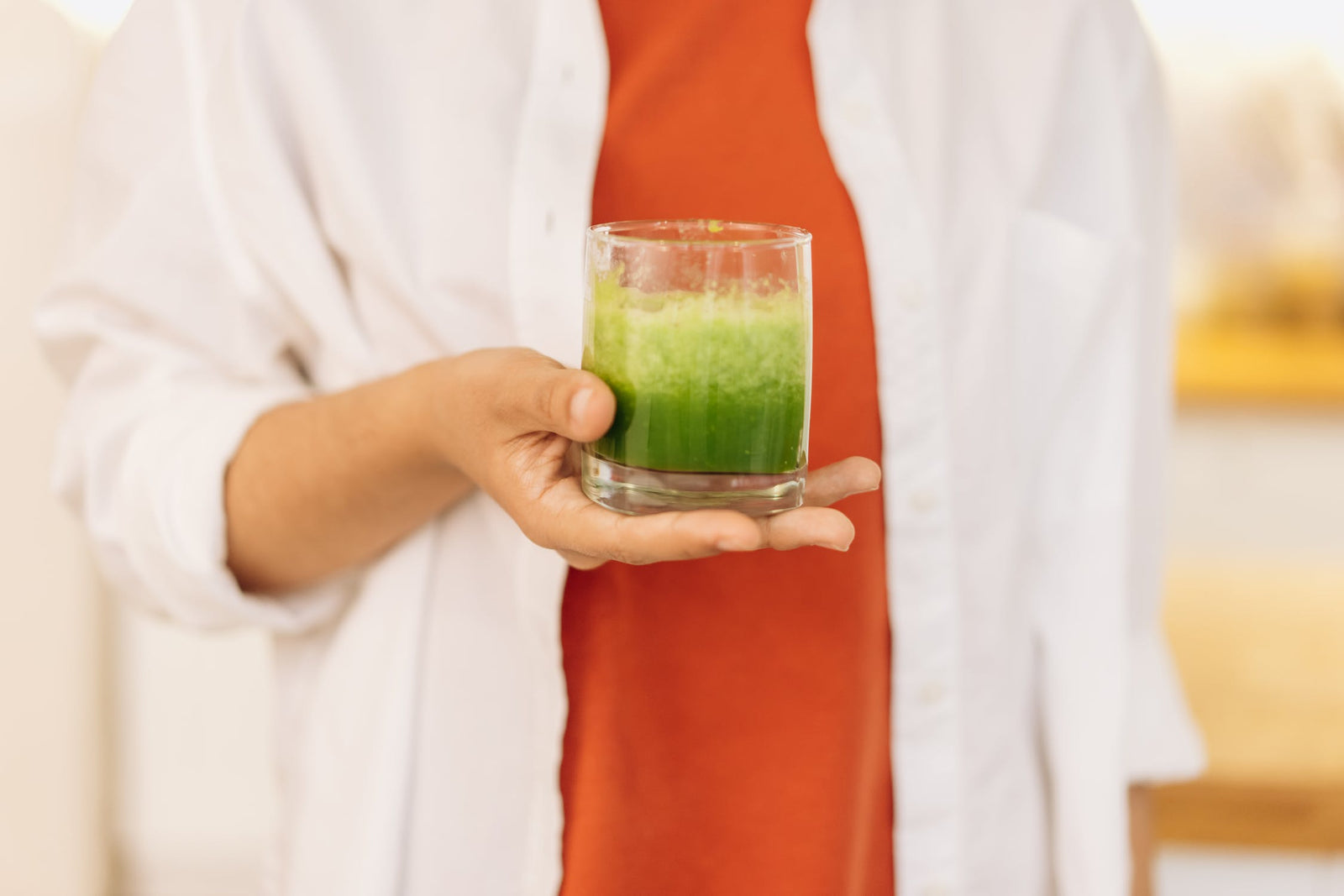Your Basket is Empty
10's of 1000's Of UK Customers Since 2012
10's of 1000's Of UK Customers Since 2012
Effective Natural Remedies to Stop Feet Swelling
June 06, 2025 9 min read
Did you know nearly 40% of adults get swollen feet? It can happen for many reasons, like health issues, how we live, and our surroundings. It can really hurt and make it hard to do everyday things.

Finding good ways to stop feet swelling is key. We'll look at why it's important and how to feel better. Natural methods are great because they usually don't have bad side effects like medicine can.
Key Takeaways
- Understand the common causes of swollen feet
- Discover the benefits of using natural remedies
- Learn simple and effective methods to reduce foot swelling
- Explore lifestyle changes that can help alleviate swelling
- Identify when to seek medical attention for swollen feet
Understanding Foot Swelling: Causes and Effects
Many of us get foot swelling sometimes. It can happen for many reasons. These include lifestyle choices and health issues.
Common Causes of Swollen Feet
Several things can make your feet swell. These include:
- Pregnancy, where fluid retention and increased blood volume can lead to swelling
- Hot weather, causing fluid to accumulate in the feet and ankles
- Certain medical conditions, such as heart failure, kidney disease, or deep vein thrombosis
- Prolonged standing or sitting, which can impede blood circulation
Knowing these causes helps find the best way to reduce swelling.
Symptoms to Watch For
Swollen feet can be uncomfortable. Look out for these symptoms:
| Symptom | Description |
|---|---|
| Pain or tenderness | If your swollen feet are painful to the touch or hurt when you walk |
| Redness or warmth | If the skin around your swollen area becomes red or feels warm |
| Shortness of breath | If you experience difficulty breathing alongside foot swelling |
Knowing these symptoms helps spot serious issues early.
When to Seek Medical Advice
See a doctor if you notice these signs:
- Sudden or severe swelling
- Swelling accompanied by pain, redness, or warmth
- Swelling that doesn't improve with elevation or rest
Get medical help if unsure about swelling or if it affects your daily life. They can diagnose and suggest remedies for swollen feet.
Importance of Staying Hydrated
Drinking water helps reduce swelling in the feet. It improves blood flow and cuts down on fluid buildup. When we drink enough, our bodies get rid of toxins and extra fluids better.
How Water Helps Reduce Swelling
Drinking water might seem odd for swelling, but it's very important. Water makes blood thinner, helping it move better through veins and arteries. This reduces swelling in the feet. Also, staying hydrated boosts lymphatic function, which is key for removing extra fluids.
Tips for Increasing Daily Water Intake
It can be hard to drink more water, but there are ways to do it. Start your day with a glass of water before coffee. You can also add fruits or herbs like lemon, lime, or mint to your water for a nice taste.
Another good idea is to set reminders to drink water at set times. This helps you remember to stay hydrated.
Eating foods with lots of water can also help. Cucumbers, watermelon, and celery are not only hydrating but also full of good stuff for your body.
Beneficial Foods for Reducing Swelling
Some foods have special powers to fight swelling in our feet. Eating these foods can make us feel better and healthier.
Anti-Inflammatory Foods
Some foods are good at fighting swelling. Here are a few:
- Leafy Greens like spinach and kale, which are full of good stuff.
- Berries such as blueberries and raspberries, packed with anti-inflammatory powers.
- Fatty Fish like salmon and sardines, full of omega-3 fatty acids.
Foods Rich in Potassium
Potassium helps keep sodium levels balanced, which fights swelling. Here are some foods rich in potassium:
- Leafy Greens like spinach.
- Bananas, a tasty and potassium-rich snack.
- Avocados, full of potassium and healthy fats.
Eating more potassium can help with foot swelling.
Foods to Avoid
Some foods can make swelling worse. It's best to avoid:
- Processed Foods, which are often salty.
- Sugary Drinks and foods, which cause inflammation.
- Foods High in Saturated Fats, which also cause inflammation.
Choosing the right foods can help manage swelling in our feet.
"The food you eat can either be the safest and most powerful form of medicine, or the slowest form of poison."
Eating a balanced diet with anti-inflammatory and potassium-rich foods helps. Avoiding processed and salty foods also helps reduce swelling and keeps us healthy.
Elevation Techniques That Work
Elevating your feet is a great way to reduce swelling. It helps improve blood flow back to the heart. This can make swelling go down.
Proper Elevation Methods
To elevate your feet right, lie down and put pillows under them. Make sure it's comfy and you can relax. A wedge pillow can also help.
Your feet should be higher than your heart. This helps blood flow back to the heart. Check by making sure your feet are above your chest.
Recommended Duration for Elevation
Start with 15-20 minute sessions, a few times a day. You can change it as you get used to it. Adjust based on how you feel and how bad the swelling is.
| Elevation Duration | Frequency | Expected Outcome |
|---|---|---|
| 15-20 minutes | 3-4 times a day | Reduced swelling |
| 30 minutes | 2-3 times a day | Improved circulation |
For more tips on managing swollen feet and ankles at home, visit Cleveland Clinic's Health Essentials.
The Role of Exercise in Reducing Swelling
We can make our feet less swollen by doing gentle exercises. These exercises help our blood flow better. This is key to getting rid of extra fluid in our feet.
Gentle Exercises to Try
Doing gentle exercises can really help with foot swelling. Here are some good ones:
- Walking: It's simple and boosts blood flow.
- Stretching: It helps relax muscles and improves blood flow.
- Toe curls and spreads: These strengthen your foot muscles.
- Ankle rotations: They help circulation and make ankles less stiff.
Importance of Movement and Circulation
Moving and having good blood flow are key to less swelling. Exercise makes our body pump blood better. This means less fluid in our feet.
Regular exercise also makes our heart healthier. A healthy heart means less swelling.
Let's see how different exercises affect our circulation and swelling:
| Exercise | Impact on Circulation | Effect on Swelling |
|---|---|---|
| Walking | Improves blood flow | Reduces fluid retention |
| Stretching | Enhances flexibility and blood flow | Reduces muscle tension |
| Toe curls and spreads | Strengthens foot muscles | Improves local circulation |
By adding these exercises to our daily life, we can fight swelling in our feet. We also get healthier overall.
Natural Compresses for Swollen Feet
Natural compresses are a simple way to help with swollen feet. We'll look at how to use them well. Cold and warm compresses both have benefits, depending on why your feet are swollen and what you like.
Cold vs. Warm Compresses
Cold compresses are good for reducing swelling and pain. They're great for sudden injuries or after exercising. Warm compresses, on the other hand, help blood flow better. This is good for long-term swelling or stiffness.
Cold Compress Benefits: Reduces inflammation, numbs pain.
Warm Compress Benefits: Improves circulation, relaxes muscles.
| Compress Type | Benefits | Best Used For |
|---|---|---|
| Cold Compress | Reduces inflammation, numbs pain | Acute injuries, post-exercise swelling |
| Warm Compress | Improves circulation, relaxes muscles | Chronic swelling, stiffness |
How to Apply a Compress Effectively
Putting on a compress is easy, but doing it right makes it better. Here's how:
- For a cold compress, wrap ice in a cloth or use a cold pack. Apply for 15-20 minutes.
- For a warm compress, soak a cloth in warm water, wring it out, and apply for 15-20 minutes.
- Repeat as needed, but let your skin get back to normal temperature between uses.
Using natural compresses can help with swollen feet. Whether you like the cold or warm, there's a compress for you.
Herbal Remedies That Help
Herbal remedies can help reduce foot swelling naturally. Some herbs have anti-inflammatory properties. This can help lessen swelling.
Popular Herbs for Swelling Relief
Effective herbs for foot swelling include ginger, turmeric, and chamomile. Ginger has compounds called gingerols. These help reduce pain and swelling. Turmeric has curcumin, a strong anti-inflammatory. Chamomile soothes and reduces inflammation.
| Herb | Active Compound | Benefit |
|---|---|---|
| Ginger | Gingerols | Reduces pain and swelling |
| Turmeric | Curcumin | Powerful anti-inflammatory |
| Chamomile | Apigenin | Soothes and reduces inflammation |
How to Prepare Herbal Infusions
Making herbal infusions is easy at home. To do this, steep herbs in hot water. Here's a simple recipe:
- Use one teaspoon of dried herb (or two teaspoons of fresh herb) per cup of boiling water.
- Steep for 5-10 minutes, depending on the herb.
- Strain and drink warm or cooled, as you like.
Drink herbal infusions several times a day to help with swelling. Always talk to a healthcare professional before trying new herbal remedies. This is important if you have health conditions.
Supportive Footwear Choices
We think the right shoes can really help with swollen feet. Good shoes can improve blood flow and make you feel better.
Features of Shoes to Look For
When picking shoes for swollen feet, look for a wide toe box. This lets your toes breathe. Also, choose soft, breathable materials to avoid irritation. And make sure they have adjustable closures for a snug fit.
Shoes with good arch support and cushioning are great. They help take pressure off your feet. Light shoes with a rocker sole also help your feet move naturally.
Benefits of Compression Socks
Compression socks are also good for swollen feet. They squeeze your ankles and get looser up your leg. This helps blood flow better.
Wearing compression socks can reduce swelling and improve circulation. They also relieve discomfort. They're great for people who are on their feet a lot or have poor circulation.
| Feature | Benefits | Recommended For |
|---|---|---|
| Wide Toe Box | Accommodates swelling, reduces pressure | Individuals with swollen toes or feet |
| Soft, Breathable Materials | Reduces irritation, enhances comfort | Those with sensitive skin or irritated feet |
| Adjustable Closures | Ensures a secure, customizable fit | Individuals with varying levels of swelling |
| Good Arch Support | Reduces strain, promotes proper alignment | People with flat feet or plantar fasciitis |
Choosing the right shoes and wearing compression socks can help with swollen feet. You'll feel more comfortable every day.
Alternative Therapies for Swelling Relief
Alternative therapies like acupuncture and massage can help with swelling. They not only reduce foot swelling but also boost your overall health. This is by improving blood flow and lowering stress.
Acupuncture for Foot Swelling
Acupuncture is a traditional Chinese medicine that uses thin needles. It's placed in certain body points to start healing. For swollen feet, it boosts blood flow and cuts down inflammation.
Studies show it's great for easing pain and swelling from many conditions.
Benefits of Massage Therapy
Massage therapy is another way to ease swollen feet. It involves soft massage on the swollen area. This improves blood flow and helps clear out swelling.
Regular massages also relax you, ease muscle tightness, and keep your feet healthy.
Key benefits of massage therapy include:
- Improved circulation
- Reduced muscle tension
- Enhanced lymphatic drainage
- Promoted relaxation and reduced stress
Adding these therapies to your routine can help with swollen feet. It can also make your life better overall.
Lifestyle Changes for Long-Term Relief
To manage foot swelling, we must make lasting changes. Simple adjustments can help reduce swelling and boost our health.
A Healthy Weight for Happy Feet
Keeping a healthy weight is key to less foot swelling. Too much weight adds pressure, making feet swell. Eating right and exercising helps us stay healthy and ease foot pressure.
Cutting Back on Salt
Less salt means less swelling. Too much salt holds water, making feet swell. Choosing low-sodium foods helps keep fluid levels down and reduces swelling.
These lifestyle changes offer long-term relief from foot swelling. They also improve our overall health.
FAQ
What are the most effective natural ways to stop feet swelling?
Drink plenty of water, lift your feet up, and move around. Use ginger and turmeric to help too.
How can I reduce foot swelling naturally at home?
Try cold or warm packs on your feet. Wear compression socks. Eat foods that fight swelling like berries and greens.
What are some remedies for swollen feet that I can try?
Lift your feet, use herbal teas, and try acupuncture and massage.
How can I alleviate foot swelling caused by medical conditions?
See a doctor to find out why your feet are swollen. Then, use natural ways and change your lifestyle.
What methods can I use to relieve swollen feet quickly?
Lift your feet, use a cold pack, or try arnica to lessen swelling.
Are there any tips for reducing foot swelling that are specific to busy professionals?
Take breaks to lift your feet, wear good shoes, and drink water all day.
How can I prevent my feet from swelling in the first place?
Keep a healthy weight, eat less salt, and wear shoes that support your feet.
Can certain foods help reduce inflammation and alleviate foot swelling?
Yes, eat foods with omega-3s, antioxidants, and potassium to fight swelling.
Are there any herbal treatments that can help alleviate foot swelling?
Yes, ginger, turmeric, and arnica can help because they fight inflammation.
How can I incorporate lifestyle changes to achieve long-term relief from foot swelling?
Keep a healthy weight, eat less salt, and drink lots of water for long-term relief.

Reduce Bloating: How Superfoods Can Aid Digestive Comfort
February 28, 2024 9 min read
Bloating, a common digestive issue, affects many individuals worldwide. Characterised by a feeling of fullness, tightness, or swelling in the abdomen, bloating can be both uncomfortable and distressing. While it's often a result of overeating or consuming certain foods that the body finds hard to digest, bloating can also be a symptom of various underlying health conditions. It's a physical discomfort that can also impact one's self-esteem and quality of life.
Read More
Green Smoothie Recipes: Incorporating Superfoods for a Health Boost
February 21, 2024 10 min read
Green smoothies are more than just a health trend; they are a powerful way to enhance your daily nutrition and overall well-being. At the heart of these vibrant drinks are leafy greens – packed with essential vitamins, minerals, and fibre – blended into a convenient and delicious form. But what elevates a green smoothie from merely nutritious to a powerhouse of health? The answer lies in the incorporation of superfoods.
Read More
Discover the Benefits of Adding Green Drink Smoothies to Your Daily Routine
February 17, 2024 7 min read
Discover the benefits of adding green drink smoothies to your daily routine. Enhance your health and well-being with nutrient-rich beverages that improve digestion, boost energy levels, and support weight management. Start your journey to better health with Lean Greens today.
Read More